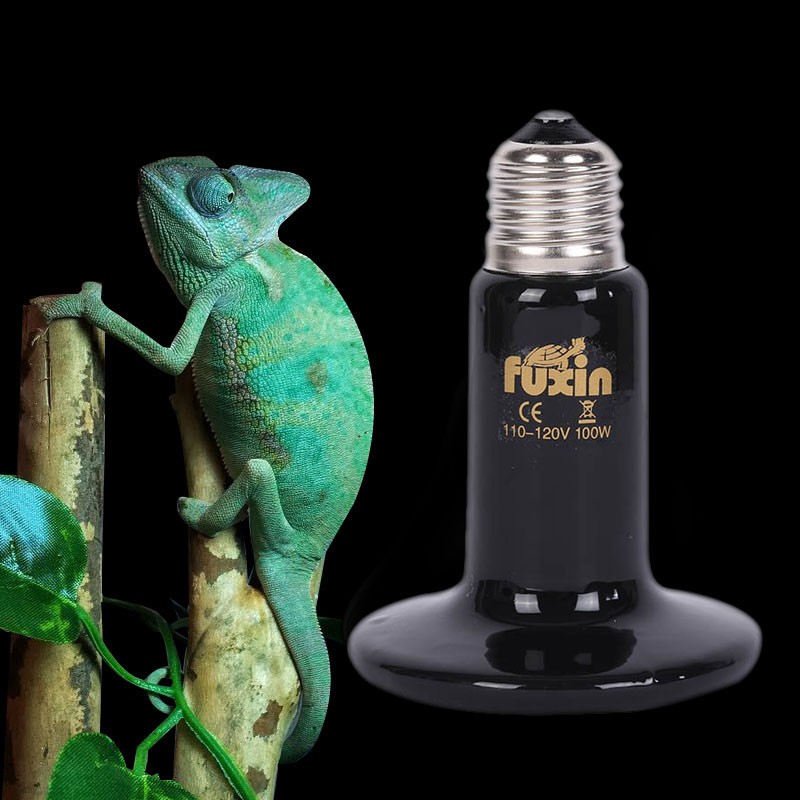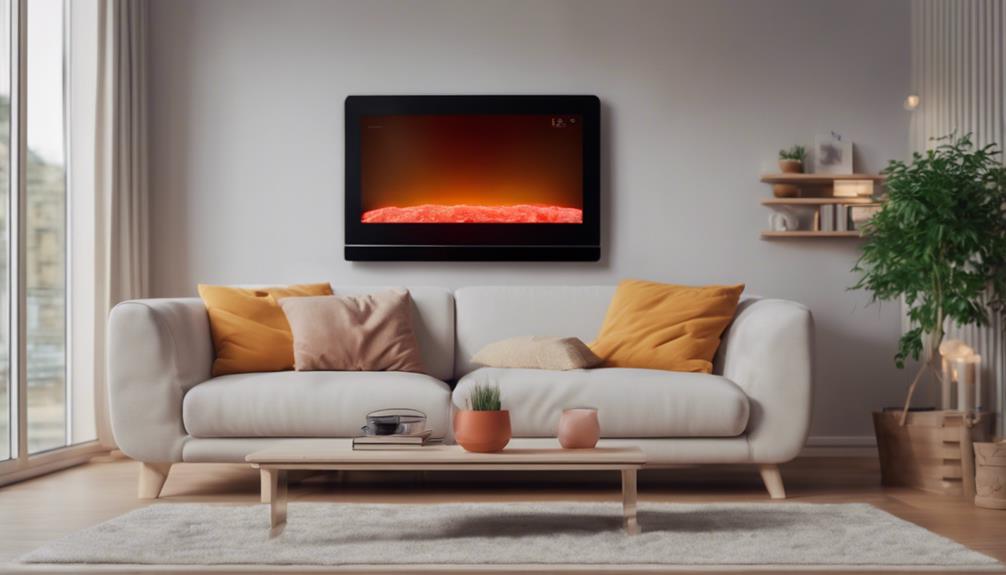
When seeking ideal energy efficiency, infrared heaters are a trusted choice. They efficiently heat objects directly, reducing energy waste. By emitting infrared radiation, they provide instant warmth and maintain humidity levels, benefiting respiratory health. Operating through electromagnetic waves, they target heat at people and objects, mimicking the sun's natural warmth. With safety features like tip-over protection, they offer peace of mind. Consider smart thermostats and insulation upgrades to maximize savings. Strategic placement and regular maintenance guarantee consistent efficiency. Infrared heaters offer a reliable and cost-effective solution for warmth and comfort while enhancing energy usage.
Benefits of Infrared Heaters

One significant advantage of infrared heaters is their ability to efficiently and directly heat objects and people in a room, rather than wasting energy on heating the air. By emitting infrared radiation, these heaters warm up objects and individuals in their path, providing almost instant heat that's both energy-efficient and cost-effective. This targeted heating approach not only results in quicker warmth but also reduces energy consumption compared to traditional heating methods.
In addition to energy efficiency, infrared heaters offer various health benefits. Unlike conventional heaters that can dry out the air and cause respiratory issues, infrared heaters don't reduce humidity levels, helping to maintain a comfortable and healthy environment. Additionally, infrared heat is often compared to natural sunlight, which can have positive effects on mood and overall well-being.
Moreover, infrared heaters come equipped with safety features such as tip-over protection and overheating sensors, ensuring a secure heating experience. These features provide peace of mind, especially when using the heater in homes with children or pets.
Understanding Infrared Heating Technology
To understand infrared heating technology, it's important to grasp how infrared radiation functions as a heat source, allowing for efficient and targeted heating of objects and individuals.
Infrared heater technology operates on the principle of heat transfer through electromagnetic waves. These heaters emit infrared radiation that directly heats up objects in its path without heating the air in between, unlike traditional convection heaters.
The key advantage lies in the efficiency of this targeted approach, as it minimizes heat loss by directly warming people and objects. This technology works on the same principles as the sun, which heats the earth through infrared radiation.
Tips for Optimizing Energy Savings
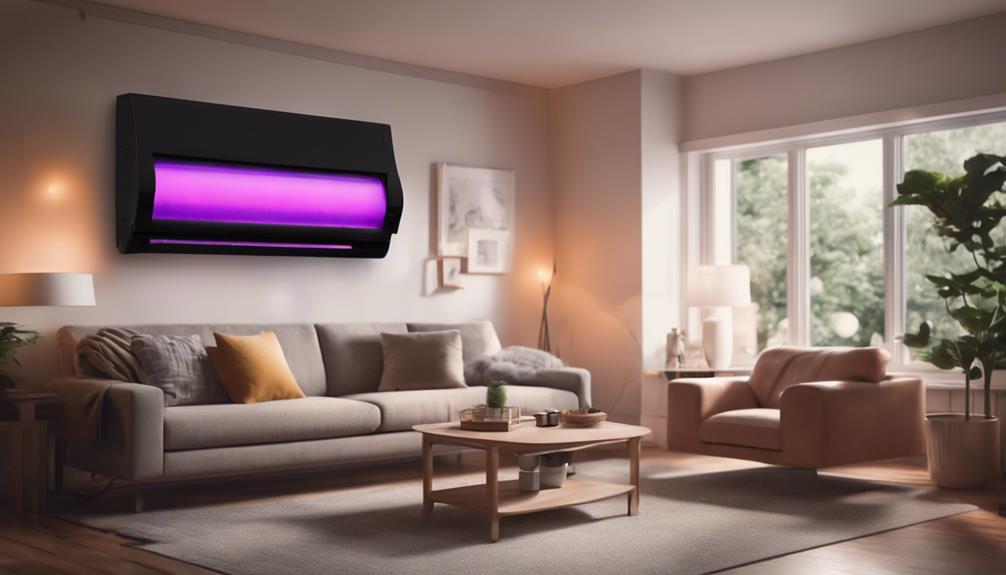
Maximizing energy savings with infrared heaters involves implementing specific strategies to optimize their efficiency and performance.
To start, consider installing smart thermostats that can regulate the temperature based on occupancy and usage patterns, ensuring the heater operates only when needed. Smart thermostats can learn your preferences and adjust settings automatically, leading to significant energy savings over time.
Additionally, investing in insulation upgrades for your home can complement the efficiency of infrared heaters. Proper insulation helps retain the heat produced by the heaters, preventing it from escaping through walls, ceilings, or windows. This means the heaters can work more effectively, requiring less energy to maintain a comfortable temperature indoors.
Placement Strategies for Efficiency
Consider strategic placement of your infrared heaters to maximize efficiency and heat distribution throughout the space.
When installing your infrared heaters, verify they're mounted at an ideal height of around 8 feet above the floor to achieve the best heat coverage.
It's recommended to place the heaters where they have a clear line of sight to the occupants and aren't obstructed by furniture or other objects.
Additionally, take into account the room layout to determine the most effective placement.
For open-concept spaces, positioning the heaters in centralized locations can help evenly distribute heat.
In rooms with partitions or alcoves, installing multiple heaters strategically can prevent cold spots.
When planning the installation, consider factors such as insulation, windows, and drafts that may affect heat retention.
Comparing Energy Costs With Other Heaters
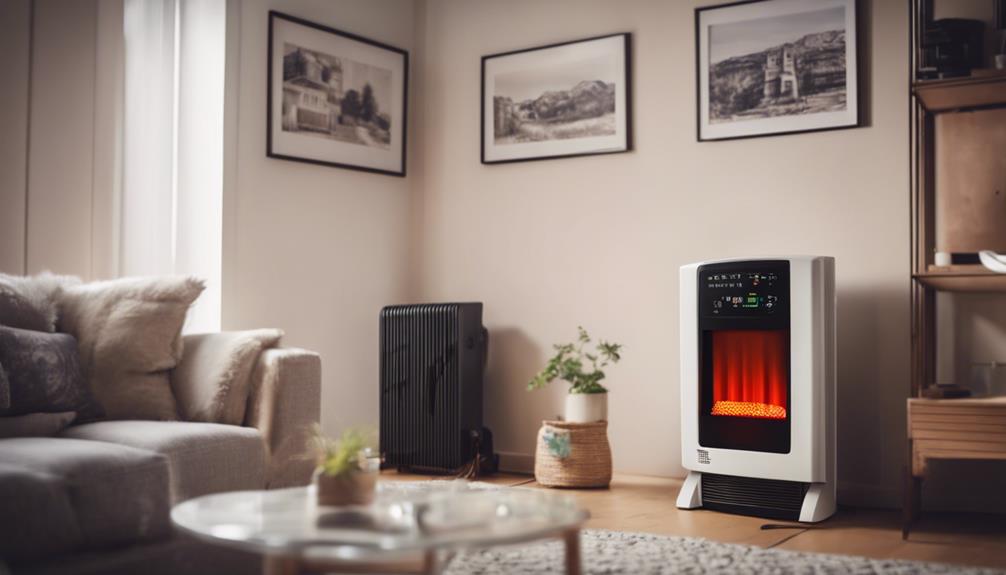
Compare energy costs between infrared heaters and other heating options to determine the most cost-effective solution for your space.
Infrared heaters are known for their efficient energy consumption due to their ability to directly heat objects and people in a room, rather than wasting energy on heating the air. When compared to traditional convection heaters, infrared heaters can result in significant cost savings over time. The key lies in the way infrared heaters emit heat, which reduces heat loss and guarantees that the warmth is concentrated where it's needed most.
When analyzing cost comparisons, consider the wattage of the heater and the number of hours it will be used daily. Infrared heaters typically range from 300-1500 watts, allowing you to choose a model that aligns with your specific heating needs.
Maintenance Practices for Energy Efficiency
Regular maintenance plays an essential role in ensuring ideal energy efficiency of your infrared heater system.
One significant aspect of maintenance is regular filter replacement. Clogged filters can obstruct airflow, leading to decreased heat distribution and increased energy consumption. It's recommended to check and replace filters every 3 to 6 months, depending on usage and environmental factors.
In addition to filter replacement, ensuring proper heat distribution is critical for maximizing energy efficiency. Check the reflectors and heating elements for any signs of damage or misalignment.
Clean them regularly to prevent dust or debris buildup, which can hinder heat distribution and reduce the overall effectiveness of the system.
Enhancing Comfort With Infrared Heating
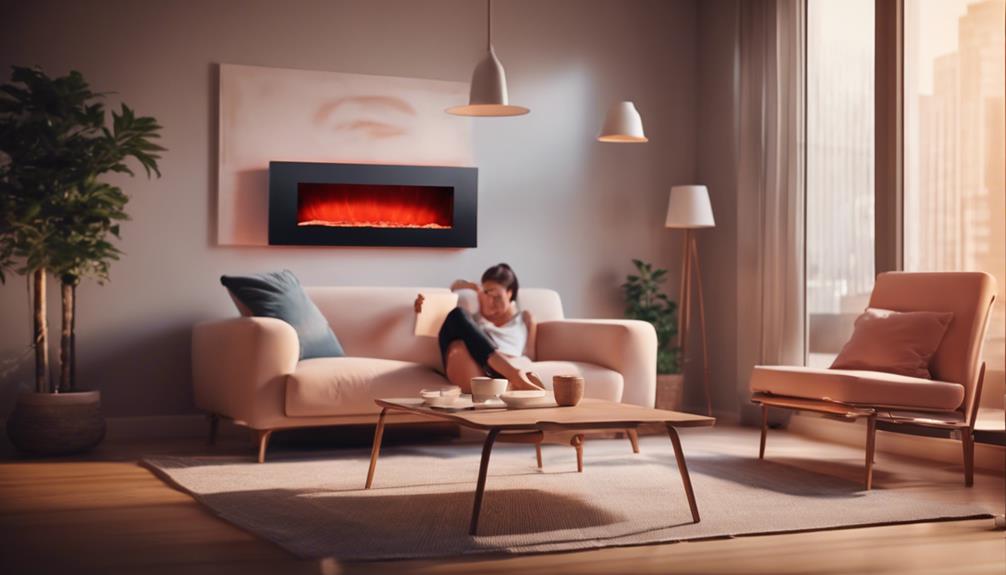
To optimize the comfort provided by your infrared heating system, it's important to understand how infrared heat works to create a cozy and consistent warmth in your space.
Infrared comfort is achieved by the direct transfer of heat from the infrared waves to objects and individuals in the room, rather than heating the air like traditional heating systems. This results in a more even distribution of warmth, eliminating cold spots and providing a comfortable ambiance throughout the space.
Infrared heating ambiance is characterized by a gentle and natural heat that mimics the feeling of being warmed by the sun. The radiant heat emitted by the infrared panels or lamps warms objects in its path, including furniture, floors, and people, creating a pleasant and soothing environment.
Conclusion
To sum up, infrared heaters offer a trusted choice for energy efficiency due to their ability to provide targeted heat, reduce energy waste, and lower overall heating costs.
By understanding the technology behind infrared heating and implementing strategic placement and maintenance practices, you can optimize energy savings and enhance comfort in your space.
Consider the benefits of infrared heaters when looking for an efficient heating solution for your home or office.
